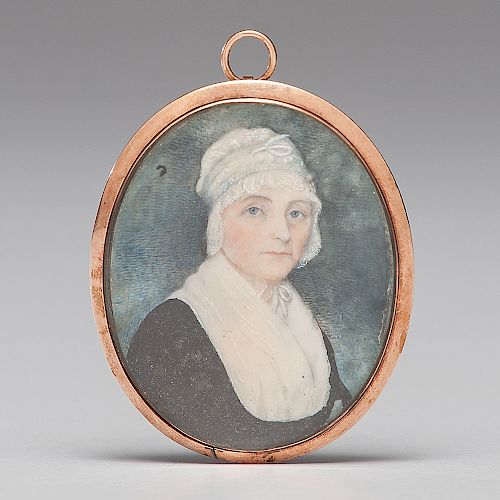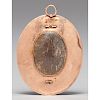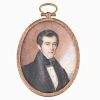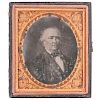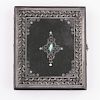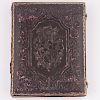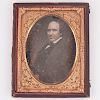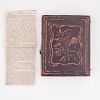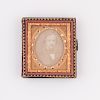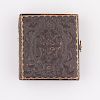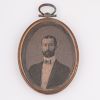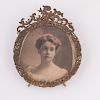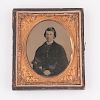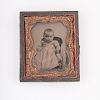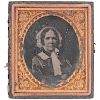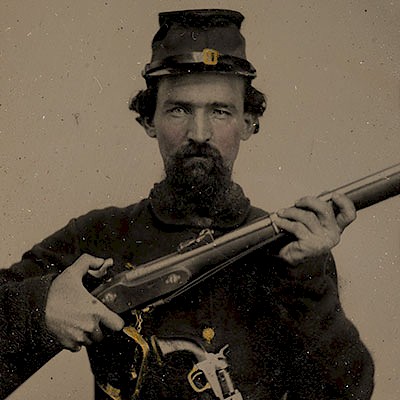Outstanding Early Image Collection Descended from Kentucky’s Prominent Johnson and Tyler Families, Including a Signed Dubourjal Miniature of Robert Ty
About Seller
6270 Este Ave.
Cincinnati , OH 45232
United States
With offices in Cincinnati, Cleveland and Denver, Cowan’s holds over 40 auctions each year, with annual sales exceeding $16M. We reach buyers around the globe, and take pride in our reputation for integrity, customer service and great results. A full-service house, Cowan’s Auctions specializes in Am...Read more
Two ways to bid:
- Leave a max absentee bid and the platform will bid on your behalf up to your maximum bid during the live auction.
- Bid live during the auction and your bids will be submitted real-time to the auctioneer.
Bid Increments
| Price | Bid Increment |
|---|---|
| $0 | $25 |
| $500 | $50 |
| $1,000 | $100 |
| $2,000 | $250 |
| $5,000 | $500 |
| $10,000 | $1,000 |
| $20,000 | $2,500 |
| $50,000 | $5,000 |
| $100,000 | $10,000 |
About Auction
Jun 21, 2019
On June 21, Cowan’s Auctions will be offering a remarkable selection of historic photography, letters, documents, flags, political ephemera, and more representing the Revolutionary War-period through the Civil War, Indian Wars, and beyond, as well as the American West. Cowan's Auctions dawnie@cowans.com
- Lot Description
Lot of 14 images representing two of Kentucky’s first and most influential families. Images in the collection depict descendants of Kentucky heroine Jemima Suggett Johnson, a leader of the “Women of Bryan’s Station,” as well as members of the Tyler family of Louisville which was related to the Johnsons by marriage. Collection spans early nineteenth century through early twentieth century. The Johnson/Tyler image collection includes the following:
Oval portrait miniature on ivory, possibly a second-generation Johnson family member such as Elizabeth Johnson Payne (1772-1846) or Sally Johnson Ward (1778-1816). Early 19th century, unsigned. Approx. 2 x 2.5 in.
Oval portrait miniature on ivory believed to be of Robert Tyler (1805-1852). Signed " Dubourjal, 1832." Approx. 2.25 x 3 in. French portrait artist Savinien Edme Dubourjal (1795-1853) worked in the United States as well as France, though the exact dates of his time in the United States are unclear. Dubourjal exhibited at the New York Academy and appears to have been active from the early 1820s through 1850. His work is relatively rare, and his sitters included many prominent individuals of the time period such as Henry Clay and John C. Calhoun.
Quarter plate daguerreotype of Robert Tyler housed in a full pressed paper case separated at spine. Accompanied by clipped newspaper obituary for the sitter.
Two sixth plate melainotypes, with the back of each plate inscribed "Febry 1858," of Captain Henry Johnson (1794-1862) and Elizabeth Julia Flournoy Johnson (1800-1882). Images appear to have originally been housed in matching cases but only one mother of pearl inlaid front case survives on which the velvet pad is marked "Theo. Harris / Artist / Louisville." Captain Henry Johnson, the youngest son of Jemima and Robert Johnson, served with his brother (and future US Vice President) Richard Mentor Johnson during the War of 1812. Following the war he married Elizabeth Julia Flournoy (1800-1882) of Fayette County, Kentucky. The two maintained plantations in both Kentucky and Mississippi.
Quarter plate daguerreotype of Charles Flournoy Johnson housed in a full leather case with mat stamped "Easterly" on lower left and "St. Louis" on bottom right. Inscription in pencil behind image reads "Mrs. Jo / Mr. C. F. Johnson / 12 / [indecipherable]." Colonel Charles Flournoy Johnson (1829-1920), the son of Captain Henry Johnson and Elizabeth Flournoy Johnson, served as the aide-de-camp to Confederate General Simon Bolivar Buckner throughout the Civil War. (See also Lot 49, a half plate ambrotype showing two Confederate soldiers who are believed to be Colonel Charles F. Johnson and his older brother Colonel Robert Adams Johnson.)
The remaining images in the collection are of unidentified subjects, however, all are thought to be later members of the Johnson and Tyler families. Additional images include: sixth plate ambrotype of an unidentified young man in non-regulation military uniform holding a kepi with the letters "CV," housed in a pressed paper half case; ninth plate tintype housed in thermoplastic frame of an unidentified young woman seated with an unidentified young child standing beside her; ninth plate ambrotype of an unidentified infant housed in pressed paper half case; albumen photo of an unidentified man housed in full sixteenth plate pressed paper case which is separated at spine; albumen photo of unidentified man in brass oval frame with "Lycett / Baltimore" engraved on verso of frame; albumen photo of unidentified woman in an ornately decorated brass oval frame with a floral scroll motif; albumen photo of an unidentified toddler and another of a young girl, both cut to circular configuration and inserted together into a frame.
Jemima Suggett Johnson (1753-1814) and her husband Robert Johnson came with their children to Kentucky ca 1780 settling first in Louisville and then at Bryan’s Station, an early, fortified settlement near present-day Lexington, Kentucky. Tradition states that on August 15, 1782, while British and Native American enemies surrounded Bryan’s Station, Jemima Johnson led a group of pioneer women and girls outside of the fort to a nearby spring where they could fill their buckets. These “Women of Bryan’s Station” sustained the garrison by providing drinking water for the fort’s defenders as well as water to douse the burning arrows that were shot into the fort’s confines once the battle ensued.
Jemima Johnson’s act of heroism firmly established the Johnson family in Kentucky lore, however, subsequent generations of Johnson descendants built upon and cemented an impressive family legacy. Together with her husband, Jemima would bear eleven children and found a powerful political and economic dynasty. Among her children several served in the War of 1812 and achieved national political office.
Jemima Johnson’s grandson, Charles Flournoy Johnson (1829-1920), married Mary Lawrence Tyler (ca 1835-1898) in 1856. Mary L. Tyler was the daughter of Mary Lawrence Chambers Tyler (1810-1891) and Robert Tyler (1805-1852), a prominent Louisville attorney and landholder. The Tyler family was prominent in its own right and had deep Kentucky roots. Robert Tyler’s grandfather, Edward Tyler II, journeyed down the Ohio River from Pennsylvania in 1780, before settling with his family near the Falls of the Ohio. Edward became one of the largest landowners in the area, passing land to his sons and playing an important role in the development of Louisville, Kentucky. With the union of Charles F. Johnson and Miss Mary L. Tyler, two of Kentucky’s first families were joined.
The image collection was consigned by an individual unrelated to the Johnson/Tyler families, but originates with Mary Chambers O’Brien Grandy (1908-2003), a direct descendant of Charles Flournoy Johnson and Mary Lawrence Tyler Johnson. Accompanying the images are two binders containing Johnson and Tyler family history and consignor research into the image collection.Please see photos of individual images for condition.Condition
- Shipping Info
-
Buyers are required to pay for all packing, shipping and insurance charges. Overseas duty charges are the responsibility of the successful Bidder. Be aware that for larger and/or valuable items, shipping charges can be substantial. - If there is no shipping amount on listed your invoice, you will need to make arrangements to pick up or ship your purchase through an alternative shipping company. Our shipping department can be contacted at 513.871.1670 (ext. 219) or email shipping@cowans.com. - Shipping charges include insurance for your order while in transit. If you have private insurance we will adjust your charge to include only packing and shipping. - Please allow 14 – 21 days after payment to package and ship your purchase as carefully as possible.
-
- Buyer's Premium



 EUR
EUR CAD
CAD AUD
AUD GBP
GBP MXN
MXN HKD
HKD CNY
CNY MYR
MYR SEK
SEK SGD
SGD CHF
CHF THB
THB